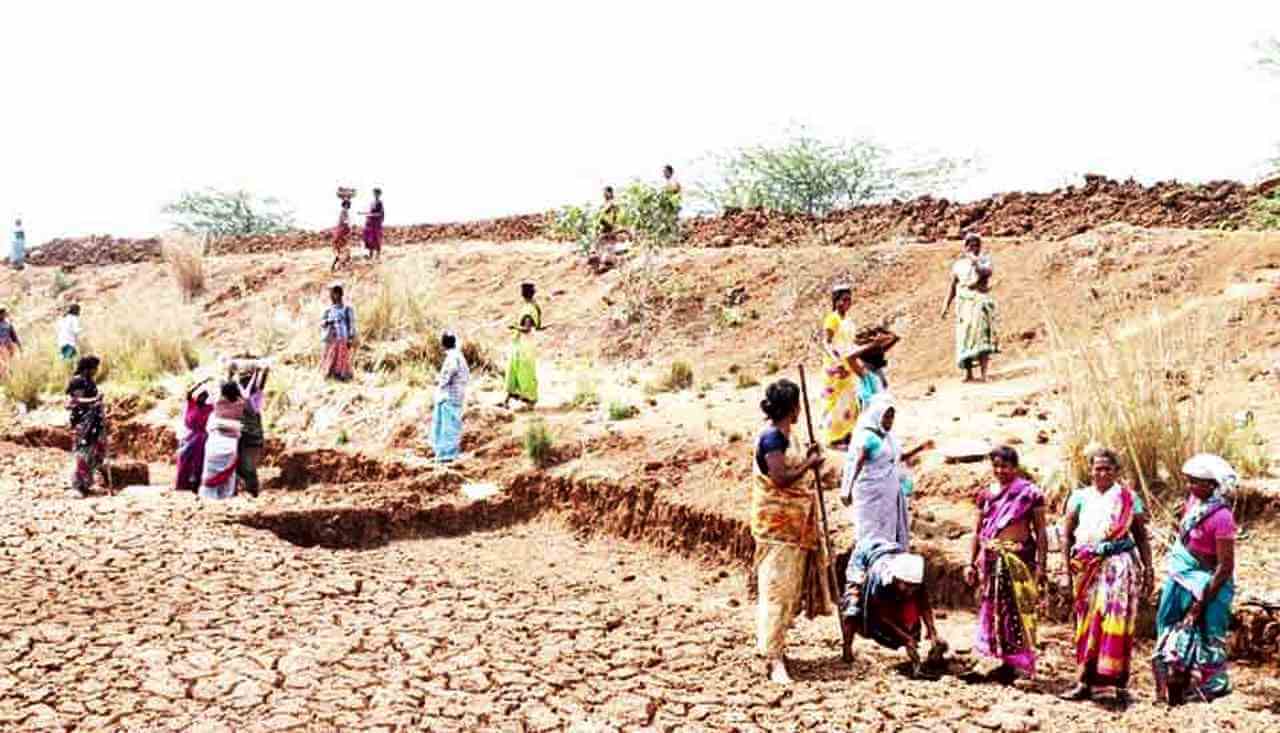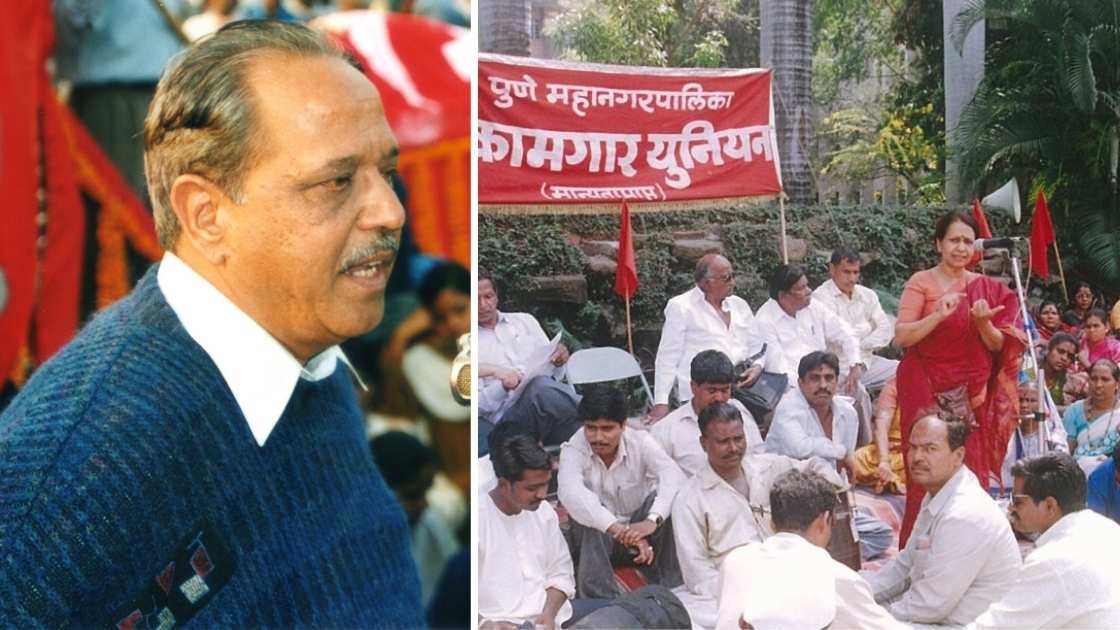In 2021-2022, the daily wage notified by the Centre wage was Rs. 245. However, the average daily wage received by the labourers was Rs. 228. The average number of working days provided to households having job cards in the same year was 51 days, which amounts an average of Rs. 11,628 per household over the year.
What are the objectives of the new changes in the scheme?
While making any changes in the scheme, the aim of any government should be to provide the rural workers with 100 days of work and full notified wage for each working day in the EGS. However, the changes being made in the programme in the two Telugu states since last November and December are not towards this aim. What then is the purpose of these changes? It appears that, rather than ensuring 100 days of work and notified wages to the workers, the new changes seek to discourage workers by reducing their working days and wages as much as possible.
EGS is a Partial Recognition of 'Right to Work'
While our Constitution upholds ‘Right to Life’ as a fundamental right, it does not guarantee 'right to work’. The NREGS is a partial recognition of the ‘right to work’ of the rural masses, as by including the right to work for a limited period of one hundred days, it gives legitimacy to that right. The scheme upholds this right in two forms. First, if the state fails to provide work within 15 days, the workers are entitled to get an unemployment allowance. Second, after completion of one week of work by workers if they do not receive wage payment in cash within 15 days, they have right to compensation. Passed through an Act of Parliament ‘The National Rural Employment Guarantee Act 2005 (NREGA), the scheme does not discriminate between men and women in terms of wages, it ensures work site facilities, and includes provisions for social audit. These are important rights under the law and any changes made in the structure of the scheme should strengthen the rights and not weaken them.
EGS programme design in composite Andhra Pradesh and its positive features:
NREGS was launched by the then Prime Minister Manmohan Singh in Andhra Pradesh. Since then, as undivided Andhra Pradesh and after bifurcation of the state into Andhra Pradesh and Telangana, the two states have been leading in the implementation of the scheme.
The AP design was studied by several national and international institutions and before the 2014 general elections, the then Central Government planned to introduce some of the ideas of the AP model to the national level.
Some of the important elements in the design of the AP’s EGS program are as follows:
After receiving the work from the EGS functionary, a group of workers would agree a time among themselves to complete the work. For example, a group comprising 20 members would go to the worksite at 6 am, finish their task by 11 am, and then could go for other work.
This was particularly convenient for women workers who were engaged in animal husbandry at home. This was one of the reasons why women workers’ participation outnumbered the male workers.
The AP programme introduced the idea of “summer allowance” which starts at 20% in February and reaches 30% up to May. The concept of “summer allowance” refers to the percentage reduction in the unit of work to be done. For example, if a unit of work is considered to be 100, 30% allowance means that if a worker completes 70% of the unit work, it will be treated as 100.
Another creative and an extremely important aspect was formation of micro level workers’ group called “Srama Shakti Sangham” (SSS). Each SSS comprised of 15 to 25 workers. Each was given a name, for example “Ambedkar Srama Shakti Sangham”. The group members elected one person as ‘Mate’ and the mate was responsible for maintaining the muster (attendance sheet). This eliminated the possibility of large-scale muster manipulation. It also made it easy to supervise the groups owing to their small sizes and allowed the groups an opportunity to fix the work time on the day and complete it in accordance to their needs.
Each worker was given a 'pay slip’ at the time of payment for the work done in a week. It contained details such as the ID of the worker, details of work, dates on which the work was done and wage details. The chronology of pay slips gave the total information on the work and wage details of the household. As activists, we always told people to keep these pay slips carefully.
In several EGS works, workers are required to use some tools such as spade, tools for digging, baskets for removing mud, etc. Andhra Pradesh EGS programme paid between Rs 3 to Rs. 5 to each worker for the tools used for working. Workers were also given Rs. 5 in summer and Rs. 2.50 in non-summer months for drinking water. These details were also recorded in the ‘pay slip’.
It was mentioned earlier that the maximum of 100 days is set per household. If two members from a household come to work, each will be able to work only for 50 days. It is here that the AP and Telangana took a novel direction. For example, if a household completed 100 days but were not able to earn the full amount of Rs 25,700 (100 days x notified wage of Rs 257), the household was allowed to continue working till they had earned this amount.
Another unique feature of the composite Andhra Pradesh EGS Program design was that the entire program is managed through a software (called Ragas) on a real time basis. All the activities and information such as job cards information, history of works done, payment received by each job card holder, budget estimation of each work and its progress, generating pay orders and pay slips, were documented through the software and open to the public.
Activists and community workers could download the information and conduct local audits in their Panchayats. If necessary, they could also approach the courts. The author of this article has filed three important cases in the High Court. In a case pointing out the difference between the wages declared under the Minimum Wages Act-1948 and the wages notified under the EGS, the interim orders of High Court gave a jolt to the Central and State governments. The case was filed by noted human rights activist and advocate, K. Balagopal and after his untimely death, Prashant Bhushan appeared before High Court of (composite) AP.
In the year 2020-2021, 14% of the total expenditure on EGS at the national level was spent in AP and Telangana.
Modi government's anti-rural labour changes
In his first speech in Parliament as Prime Minister Narendra Modi described the employment scheme as a programme only meant for digging up and filling in the soil. While any government feeling this way about the scheme would have been expected to abolish the scheme, the PM declared that the scheme would be continued ‘only’ as a sign or reminder of the previous Congress government’s failures. This was the motivation underlying the continuation of this scheme.
As mentioned earlier, the Manmohan Singh Government had given the States the flexibility to release the employment budget and spend it according to their circumstances. Although EGS appears to be purely a Central government scheme, the financial responsibility of the scheme has to be borne by the states too. According to the Employment Guarantee Act, the Centre bears 75 percent of the cost incurred in the form of wages paid to the workers, the salaries of the ESG employees and the materials used.
The financial responsibilities had to be shared by the states. For instance, states had to bear the cost of the ‘Unemployment allowance’, given in case the government fails to provide any work to a worker within 15 days of applying. If Government failed to pay wages within 15 days, after completion of one week, there was to be a compensation for the delay. 3.25% of the costs of materials was to be borne by the states.
The first change made by the Modi government was to stop the State Governments from paying workers, in the name of eradicating corruption. The role of the state governments was restricted to sending information to the Centre about who had done how much work and what was due to them. The payments would be made directly to the workers' accounts. The States were reduced from implementing agencies to becoming information providers.
A key concern that emerges is that if the Centre does not pay wages to the workers even after 15 days, the State is still required to pay the 'compensation for delay' according to the law. As is being reported, many workers are not getting wages on time and the Centre is discriminating against the non-BJP ruled states in releasing the wages, so that the BJP state units of those states can discredit the State governments.
The Central Government has its own EGS programme software and pressurised the States to change to the Centre’s software. The governments of AP and Telangana succumbed to this pressure and started changing from Ragas software to the Centre's NIC software last November-December. The technical issues aside, the day-to-day problems faced by the rural workers after these changes need to be examined.
Despite the fact that they are paid piece rates and not by the hour, the workers are required to take and upload two photos daily while at the work site. One at 11am and the other at 2pm. These photos are geo-tagged using GPS. Kesarapudi Adivamma, an adivasi woman, told the author, "How can we live ? The work site is more than 2 km from my house; our group went to worksite early morning at 6 am and completed the task. But we are expected to wait till 2 pm for the second photograph. If we are not photographed, the musters will not be uploaded and even if we completed the work, we may not get the wages. I am not able to look after my two buffalos”. People like Adivamma are thus being deliberately discouraged from taking up EGS work.
SSS groups of 15-20 workers have been abolished, and larger groups of 40 introduced. The previous mates of SSS groups were removed and replaced by a 'Work Site Supervisor' for a 40-member workers group.
The muster recording was modified against the interests of workers. For example, if we consider one week as a unit, if after three days, a worker had to stop attending due to personal problems, then the remaining three days would still be subtracted from their 100 days entitlement. At the same time, they would not be paid for the days missed.
Meanwhile, the concept of summer allowance is no longer implemented. The Department of Rural Development of AP said that they have done a 'work motion study' with the help of National Institute of Rural Development (NIRD) and there is no need for "summer allowance". They did not place the details of the study before the public. At the work site, the payments workers received for using tools was withdrawn along with the drinking water allowance.
These new changes are clearly aimed at - (i) discouraging and reducing the attendance of workers in EGS; (ii) reducing the workers wages; and (iii) complete centralization of the scheme without the Centre taking responsibility. Since 2014, there has been a reduction in the labor budget and regular non- payment of wages. In Telangana state, in 2020-2021 the workers wage bill was Rs. 4643 crores, and after the changes were introduced, it declined by 12% to Rs. 4087 crores in 2021-2022. Workers are definitely moving away from EGS, and not because employment is being generated in other sectors. It is as a result of these anti-worker changes.
Rural workers must fight for the "right to work" to be recognised as a fundamental right, and for the partial right of 100 days work under the law to be guaranteed.
Proposed demands from Andhra Pradesh rural workers:
- The SSS group system should be reinstated.
- The anti-labour policy of deducting absent days from overall entitlement should stop immediately.
- Payment for tools, drinking water and summer allowance should be reinstated
- The State government should be in charge of paying wages and have the power to enforce the law in letter and spirit
- EGS should be linked with agricultural operations of tenant farmers, small and marginal farmers.
- Wages should be paid under the EGS as per the Minimum Wages Act.
- Centrally notified wage should be increased from Rs 257 to Rs 400.
- “Right to work” should be recognised as a fundamental right.





